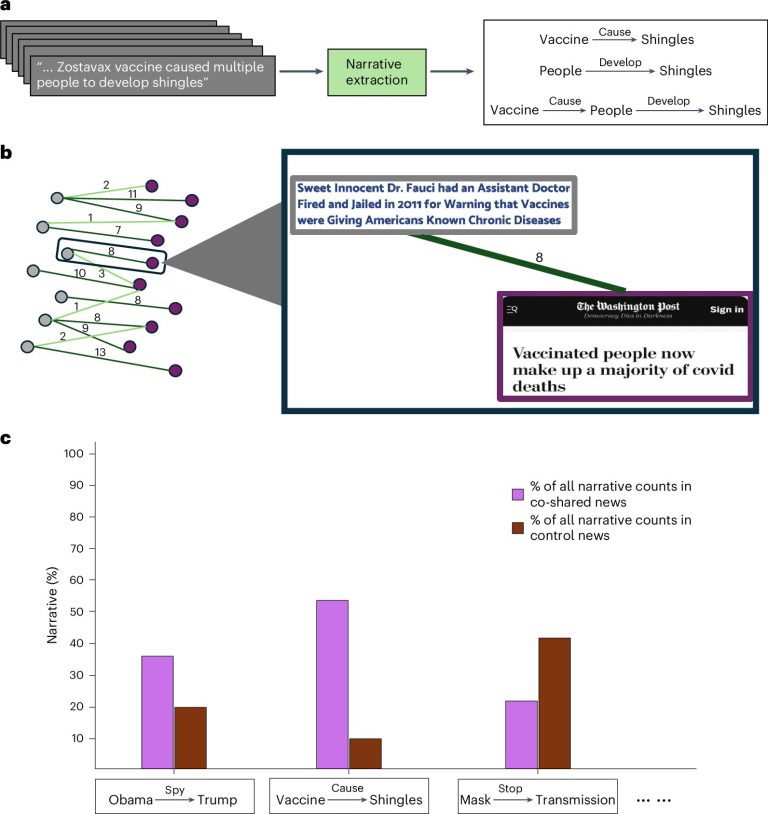The Misinformation Ecosystem: How Credible News Becomes Weaponized
The battle against misinformation has traditionally focused on flagging fabricated stories and unreliable sources, often characterized by outright falsehoods and manipulative tactics. However, a new study reveals a more insidious dimension of this information war: the strategic repurposing of credible journalism by misinformation spreaders to bolster misleading narratives. This tactic leverages the inherent trust placed in reputable news outlets, making it harder to discern and combat the resulting disinformation.
Researchers from Northeastern University, Duke University, and the University of Maryland analyzed a vast dataset of tweets from May 2018 to November 2021, focusing on how users shared articles from both credible and unreliable sources. Utilizing sophisticated algorithms to decipher complex sharing patterns, the team uncovered a disturbing trend: accurate, mainstream news stories were frequently being shared within communities known for spreading misinformation, but often reframed and presented out of context to align with pre-existing misleading narratives.
This tactic was particularly evident during the COVID-19 pandemic. Factually accurate headlines about vaccine side effects or breakthrough infections, while statistically insignificant in the larger context, became fodder for anti-vaccine rhetoric on social media. Stripped of their original context and amplified within echo chambers, these headlines were presented as evidence against vaccine efficacy, undermining public trust and contributing to vaccine hesitancy. The inherent credibility of the original source made these narratives more potent and harder to debunk.
The research underscores a critical shift in understanding the dynamics of misinformation. It’s not just about identifying false information, but understanding how information, regardless of its veracity, is used and manipulated within social networks. This study moves beyond the simplistic true/false dichotomy and explores the complex interplay between information, context, and interpretation. It demonstrates that a single news article can be both informative and misleading, depending on the framing and the intent behind its dissemination.
This phenomenon presents a complex challenge for news organizations. While maintaining factual accuracy remains paramount, the findings highlight the importance of considering how story framing, particularly headlines, can be exploited. The research suggests that even well-intentioned journalism can be weaponized in the hands of misinformation spreaders. Newsrooms need to be vigilant about the potential for misinterpretation and strive for clear, nuanced reporting that minimizes the risk of their content being misused.
The implications of this research extend beyond journalism. Scientists and other experts also need to be aware of how their work can be co-opted. Clear communication, robust public engagement, and proactive efforts to counter misinformation are crucial. This study serves as a stark reminder that the fight against misinformation requires a multi-faceted approach that considers not just the source and content of information, but also the complex social dynamics that shape its reception and impact. It highlights the urgent need for media literacy, critical thinking skills, and collaborative efforts to safeguard the integrity of information in the digital age. Moreover, it emphasizes the shared responsibility of individuals, platforms, and institutions in fostering a more informed and resilient information ecosystem. Only through understanding and addressing the evolving tactics of misinformation spreaders can we hope to mitigate their impact and protect public trust in credible information sources. This study provides a valuable framework for future research and interventions aimed at combating the increasingly sophisticated landscape of online misinformation.
This study reveals the nuanced nature of misinformation spread, highlighting the challenge of addressing manipulated context and framing. The researchers’ findings demonstrate a clear need for a shift in focus: from solely identifying false content to understanding the manipulative tactics employed to reframe and weaponize credible information.
The implications extend beyond the immediate context of the study. They raise critical questions about the responsibility of news organizations, scientists, and experts in communicating their work clearly and proactively addressing potential misinterpretations. The research also underscores the importance of media literacy among individuals and the need for critical thinking skills to navigate the complex information landscape. It emphasizes the need for collaborative efforts to build a more resilient information ecosystem.
Furthermore, the research illustrates the crucial role of understanding how information spreads and how those spreading misinformation exploit the trust placed in reputable sources. This tactical use of credible information adds another layer of complexity to the fight against misinformation, requiring not only the identification of false content, but also the detection and debunking of manipulated narratives built upon accurate information.
The findings also raise important ethical considerations for news organizations. While striving for journalistic objectivity, media outlets must also be mindful of how information can be selectively presented and framed to support misleading narratives. This necessitates careful consideration of headlines, context, and potential interpretations, particularly during sensitive or controversial events. It emphasizes the need for clear and accessible reporting that mitigates the risk of misinterpretation.
In addition, the study reveals the increasing sophistication of strategies employed by misinformation spreaders and underscores the urgent need for adaptable and proactive responses from fact-checkers, researchers, and platforms that host this content. The findings also highlight the need for continuous assessment and evolution of fact-checking methods, moving beyond simply assessing the veracity of the information itself but also analyzing the tactics used to present it.
Finally, this research stresses the importance of public awareness and education about how misinformation can be spread by repurposing credible sources. It also encourages a proactive and dynamic approach to media literacy that equips individuals with the skills to analyze the framing and presentation of information alongside its source. This empowered, critical approach to information consumption is essential for navigating the complex and rapidly evolving digital landscape.


